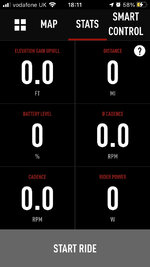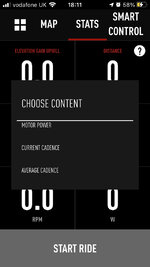FlatSix911
Well-Known Member
- Region
- USA
- City
- Silicon Valley
The real reason of the chain damage (as David has correctly pointed out) is...
An article quote:
Chains are a consumable part of the bicycle drive train. As you pile on the miles, your bike’s chain will wear out. The internal parts of the chain, the rivets and rollers, begin to wear out and give the illusion of stretching. This wear can cause the chain to mesh poorly with cogs and chainrings, causing poor shifting, premature wear to the cogs and even skipping over the cogs. Since it’s far more expensive to replace your cassette than it is to replace a chain, knowing when to replace your chain can actually save you some money in the long run. Unquote.
We replace the chain because it stretches (often after just several hundred of miles). You determine it with a chain gauge tool. When the teeth of the gauge drop inside the links at the 1.0 mark, you need to replace the chain. Nobody measures the wear of the chain due to friction, and many of us lube the chain (after degreasing it) as Reed Scot pointed out. A stretched chain may look as a new one, yet it is useless. Your question involving "the same power output" is somewhat devious. It all can be explained by the rules of mechanics... I may do a test, though, as my Vado has a power meter and the cadence meter.
Good read:
.
How is mashing different from spinning?
You know the expression "it's like riding a bike?" It means once you've learned how to do something, it's hard to ever forget. Unfortunately, the same goes for bad cycling habits. What's mashing, and why do training coaches frown upon it?adventure.howstuffworks.com
Another good read:

6 Gearing Mistakes You're Probably Making
Gears can help you ride up unclimbable climbs, bomb descents, and crush flats—but used incorrectly, they'll get you into a world of troublewww.bicycling.com
Does your bike mechanic whistle softly when she examines your drivetrain? [...] If you want to save your back, your knees, your energy, and your mechanic’s sanity, make sure you aren’t committing any of these six gearing sins.
Yet another good read:

Ask a Tech - Chain Lubrication & How Drivetrain Wear Relates to Cadence - Rider First Bike Fitting. Rider Matched Bike Sales.
Q) I just bought a 2010 Felt B2 and wanted to know if cleaning the chain with a chain cleaner box works just as good as taking the chain off and cleaning. Also, does riding at a slow cadence in a high gear stress the crank and cassette teeth more than riding a fast cadence? –...fitwerx.com
Riding in a cross gear or very low and heavy gearing combination does indeed put greater force on your drivetrain rather than finding a consistent, moderate cadence. However, it is really the shifting and grinding wear under great load associated with low cadence riding which leads to shorter drivetrain life and not the actual low cadence. If you tend to “mash gears”, as they say, try getting comfortable shifting more often and intuiting which gear combinations will yield the right cadence for hill climbs, descents, sprints and the such to minimize wear
Good links... I think it's explained well!
Ask A Tech – Chain Lubrication & How Drivetrain Wear Relates To Cadence
Q) I just bought a 2010 Felt B2 and wanted to know if cleaning the chain with a chain cleaner box works just as good as taking the chain off and cleaning.
Also, does riding at a slow cadence in a high gear stress the crank and cassette teeth more than riding a fast cadence? – Neil
Second part of your inquiry… Riding in a cross gear or very low and heavy gearing combination does indeed put greater force on your drivetrain rather than finding a consistent, moderate cadence. However, it is really the shifting and grinding wear under great load associated with low cadence riding which leads to shorter drivetrain life and not the actual low cadence. If you tend to “mash gears”, as they say, try getting comfortable shifting more often and intuiting which gear combinations will yield the right cadence for hill climbs, descents, sprints and the such to minimize wear. Thank you for the inquiry and ride fast.
How is mashing different from spinning? Most cyclists prefer spinning.
You know the expression "it's like riding a bike?" It means once you've learned how to do something, it's hard to ever forget. Unfortunately, the same goes for bad cycling habits.
Mashing refers to a kind of cycling method that many cyclists use, but most training coaches frown upon. It has to do with what's called your cycling cadence, and if you're getting ready for a bike race or need to improve your cycling performance for a triathlon, you'll want to start paying attention to this.
Cadence is to the speed at which you pedal, measured in revolutions per minute (rpm). This, of course, is related to (but not the same as) your bike's speed. A low gear will offer little pedal resistance, but it'll take furious pedaling to go fast. Conversely, a high gear will make the pedals harder to push, but it won't require as many revolutions to attain a high speed. Pedaling furiously (with a high cadence) on a low gear is called spinning, while pedaling slower (low cadence) on a high gear is called mashing. Both can get you to high speeds -- so why do the best cyclists prefer spinning?
The prevailing theory is that spinning is a more efficient use of your strength and energy. Many cyclists revert to mashing, however, because it feels faster. But, not only does mashing produce more lactic acid, it predominantly uses what's called fast-twitch muscle fibers, which fatigue faster than slow-twitch fibers (used in spinning) [source: Williamson].
The most successful cyclists achieve cadences of 80 to more than 100 rpm for long periods. Some experts maintain, however, that there isn't a one-size-fits all "optimal" cadence, and that you need to find what works best for you [source: Cheung]. And, of course, the appropriate gear at any point in time will always depend on variables such as hills, road conditions and wind.
But if you consciously incorporate spinning into your training, you'll likely become more physically fit and better able to achieve high cadences for long periods of time, just like the pros.
Last edited:


